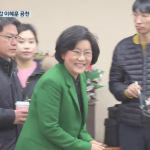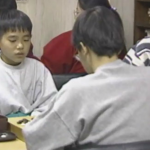Chosun Ilbo
25.03.2016
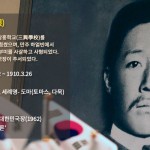 On the 26th of March it will be 106 years since the death of the martyr An Jeunggeun. An once said “when our national sovereignty is restored, the harm to our homeland will be buried”, but the sovereignty of his homeland has still not been restored. This latter quotation was enscribed on his tombstone and he is remembered annually in ceremonies, and it’s important that everyone knows his sentiment.
On the 26th of March it will be 106 years since the death of the martyr An Jeunggeun. An once said “when our national sovereignty is restored, the harm to our homeland will be buried”, but the sovereignty of his homeland has still not been restored. This latter quotation was enscribed on his tombstone and he is remembered annually in ceremonies, and it’s important that everyone knows his sentiment.
His last words just before he lost his life for his country:
“In order to restore Korean independence and maintain peace between East and West overseas, for the last three years I have been living without a home. I was not able to achieve my goal so now I must die. There are 20 million of us brethren, all striving to promote education and commerce; if you follow my cause, you will not stop even at death until our freedom and independence has been restored.”
Through his Samheung school An worked hard to raise up competent independence activists. In Harbin in Manchuria he assassinated the main architect of the [Japanese] invasion, Ito Hirobumi. After his death he was [eventually] honoured with the National Order of Grand Merit by the Republic of Korea.
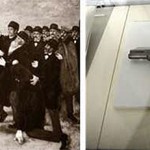
Assassination of Ito Hirobumi on Harbin station (l); the gun used in the incident (r)
An Junggeun
02.09.1879 – 26.03.1910
Clan hometown: Sunheung
Alias: Amyeong
Pen name: Eungchil
Baptism name: Tomas
Birthplace: Haeju in Hwanghaedo
Known for: Independence activism
Honours awarded: Korean Grand Order of Merit (1962)
Main literary work: Treatise on Peace for East and West
Timeline
1879 Born on the 2nd of September in Haeju, Hwanghaedo
1895 Enters the Catholic church, encouraged by his grandfather
1904 Travelled alone to Pyeongyang, stowing away via coal train
1906 After the 1905 Treaty of Eulsa between Japan and Korea, which made Korea a Japanese protectorate, An sold his school, Samheung
1907 Took part in “righteous band” guerilla activity against Japan in the Maritime Province of Siberia
1909 Assassinated Ito Hirobumi
1910 Executed on the 26th of March 1910
Early life
From a Sungheung clan and born in Hwanghae, An was born with seven marks on his chest and stomach as if he had been branded in accordance with the Big Dipper. Growing up, the marks were thought of as representing a letter. His grandfather and his father, An Taehun, both served as officials who had only passed the first level of the bureaucratic examination process. His grandfather earned wealth through selling rice. An Junggeun learned about Korea from a very young age, although he was more interested in martial arts as a child. He was a skilled hunter and horse rider, and was known as Sharpshooter, even amongst other hunters. When the Donghak movement arose in 1895, his father An Taehun was involved in organising soliders to quell the Donghak troops. With his father’s encouragement in 1895 he began learning new academic ideas, including speaking French, under Catholic priests. He also got a Catholic name, Tomas.
Righteous Band Activities
In 1904 he began working in the coal industry in Pyeongyang; in the following year when the Treaty of Eulsa was established he sold his family’s coal store, opening his Samheung school in 1906. His school struggled to attract talented students as it was in local competition with a well-funded rival school, Donui school. In 1907 he joined a “righteous band” anti-Japanese guerilla group operating in Siberia. The following year he joined with around 100 other trained personnel to cross the Tumen river and penetrate into Korea. His band was defeated in combat with the Japanese army once in Korea. After the defeat he was active in publishing the Datong Gazette, a newsletter circulated amongst exiled militants, published in order to inspire patriotism and loyalty.
Assassination of Ito Hirobumi
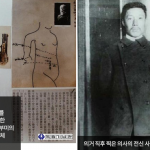
Diagram of Hirobumi’s injuries (l); An (r)
In 1909 11 of An’s comrades were kidnapped, had their fingers broken and were killed by the Japanese, dying in their struggle for national freedom. In October of that year, Ito Hirobumi the architect of Japanese aggression towards Korea, was due to be in Harbin in China for talks with Russian financiers, and it was decided that he should be punished. An travelled to Harbin along with his like-minded comrade U Deoksun. An assassinated Hirobumi on the platform of the railway station. He was arrested, imprisoned and executed on the 26th of March 1910.




